Modern football is a constant battle for space. Defenders seek to compress it, attackers seek to stretch it. One of the most sophisticated ways teams create valuable space is by deliberately attracting the opponent’s pressure — luring them forward to then exploit the areas they leave behind.
This concept sits at the heart of positional play and modern build-up schemes. It is not simply about surviving pressure, but about using it as a weapon to progress the ball in a way that destabilizes the opponent’s defensive block. This article explores why attracting pressure is so powerful, the tactical principles that underpin it, and the key methods teams use to execute it effectively.
Why Teams Attract Pressure
When an opponent presses, they commit players forward, reducing their numerical security in deeper areas. Every forward run a defender makes is a risk — it stretches the team vertically and leaves potential gaps.
By encouraging the opponent to step out of shape, the attacking team effectively “opens the door” to progress. If the press is broken, the attacking team often has:
- More space between the lines – as midfielders have been pulled higher.
- More space in behind – as defenders step forward to maintain compactness.
- Numerical or positional advantages further up the pitch – attackers can isolate defenders 1v1 or even 2v1.
Attracting pressure, then, is not merely about provocation — it is a calculated strategy to manipulate the opponent’s shape and create high-value attacking opportunities.
The Tactical Principles of Attracting Pressure
Attracting pressure is built on a set of principles that go beyond “just holding the ball.” A team must be structurally prepared to both invite and exploit pressure.
1. Positional Compactness in the First Phase
Teams seeking to attract pressure often begin by creating compactness in their build-up. Players drop closer together, creating a tempting target for the opponent to press. The key is to offer enough passing options to appear “pressable,” but with spacing that allows quick circulation if the opponent engages.
2. Provocation and Manipulation
The essence of this tactic lies in provocation. Slow ball circulation, deliberate pauses, and visible calmness under pressure signal to the opponent that the ball can be won. The psychological aspect is crucial — defenders feel compelled to press when they sense hesitation.
3. Controlled Risk-Taking
To lure an opponent forward, players must accept playing close to danger. This includes:
- Holding onto the ball longer before releasing it.
- Taking first touches toward pressure to bait the opponent.
- Maintaining composure under intense pressure rather than clearing the ball hastily.
The risk is obvious — lose the ball and the opponent is already in a dangerous position — but the reward can be game-changing.
4. Timing the Escape
Once the press is fully engaged, the team must accelerate play. The “escape” involves:
- One-touch passes into depth.
- Third-man combinations to bypass the first line.
- Quick switches of play to exploit the space the press has vacated.
Timing is crucial: escape too early and the opponent does not commit enough players forward, escape too late and you risk being trapped.
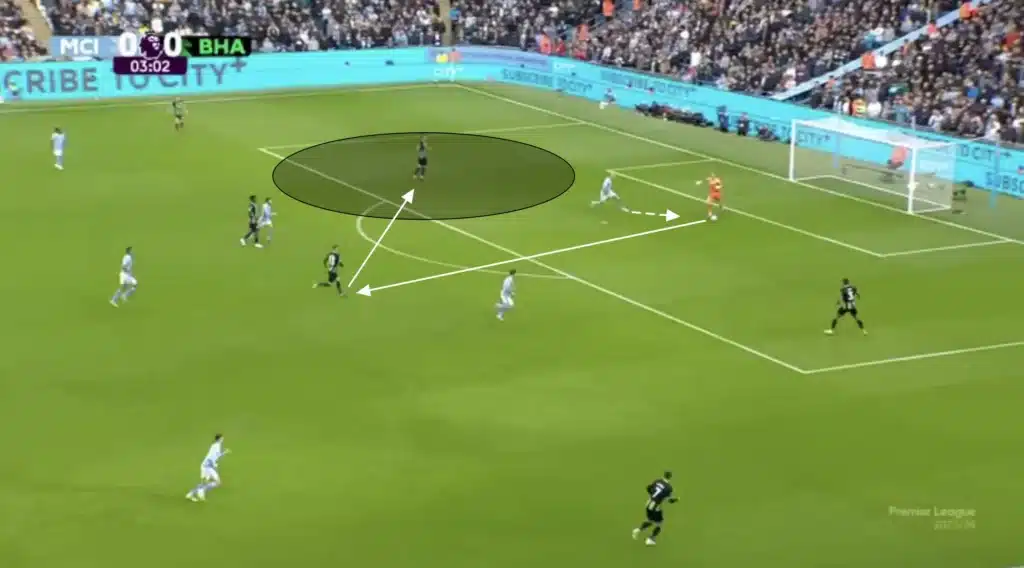
Practical Methods for Attracting Pressure
While the core idea of attracting pressure is simple — lure opponents forward to exploit the space they leave behind — the execution can look very different depending on the team’s style, structure, and individual player profiles. Below are several common methods teams use, with a bit more depth on how and why they work.
1. Dropping Additional Players into Build-Up
One of the most common approaches is to bring extra players closer to the first line of build-up. A defensive midfielder may drop between or alongside the center-backs, turning a back four into a temporary back three or back five. Sometimes even fullbacks tuck inside to create central overloads.
This compactness “invites” the opponent’s first pressing line to engage — they see more players deep and step forward aggressively. The goal is to provoke that step and then use the newly created space behind the first line.
In this situation, for example, Fluminense have a goal-kick and the holding midfielders drop into the penalty area to pick up the ball and attract pressure from the opposition.

An opposition midfielder pushes up and presses, which opens the space in the center, allowing a Fluminense attacker to drop into this space and receive the ball.

2. Deliberate Ball-Tempo Manipulation
Tempo is a subtle but critical tool for attracting pressure. Rather than circulating the ball at maximum speed, players often slow the rhythm to tempt opponents into stepping up. This can include:
- Holding the ball still for a few seconds to frustrate the opposition and trigger a press.
- Taking extra touches or slightly delaying the pass to encourage the pressing player to fully commit.
- Using body language — appearing calm and confident — to make defenders think they can win the ball with an aggressive jump.
This slow tempo is not aimless — it is carefully controlled to give the opponent a false sense of opportunity before play is accelerated.
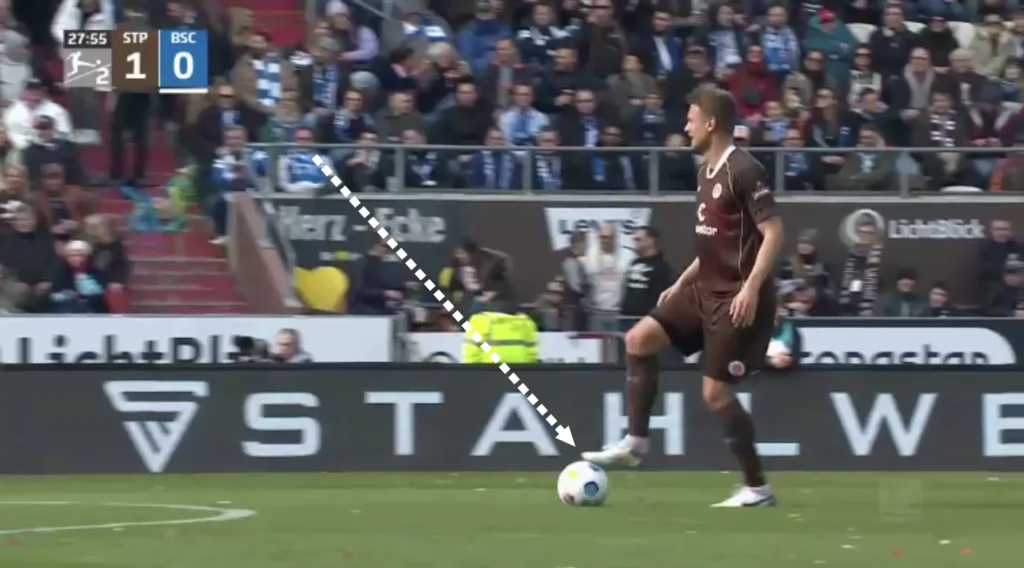
3. Short-Distance Passing Combinations
Teams often use tight triangles and quick “bounce-passes” to pull defenders toward the ball. For example, a center-back may pass into a pivot, who immediately lays the ball back under pressure. This triggers the presser to commit, at which point the next pass breaks through the now-vacated lane.
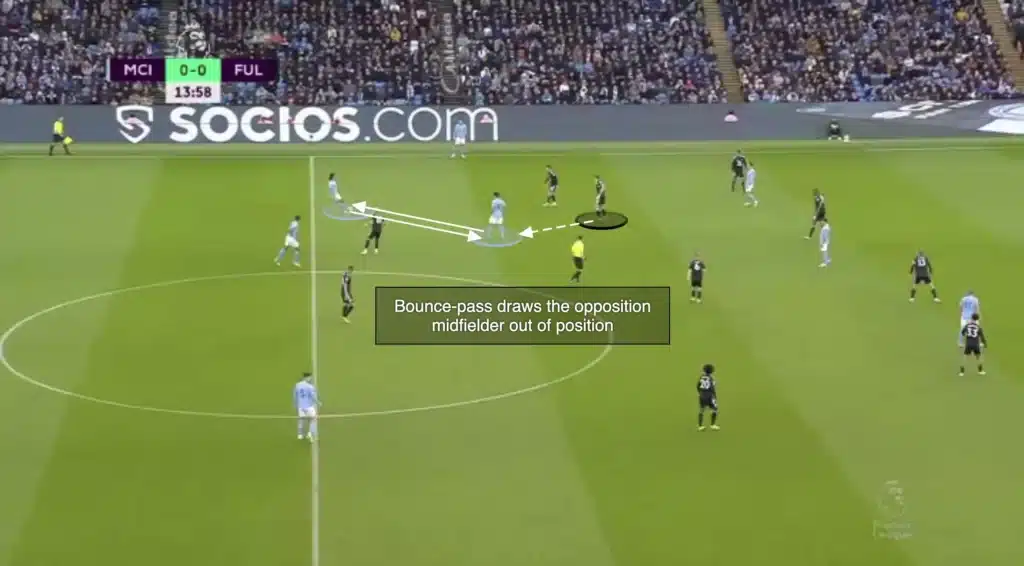
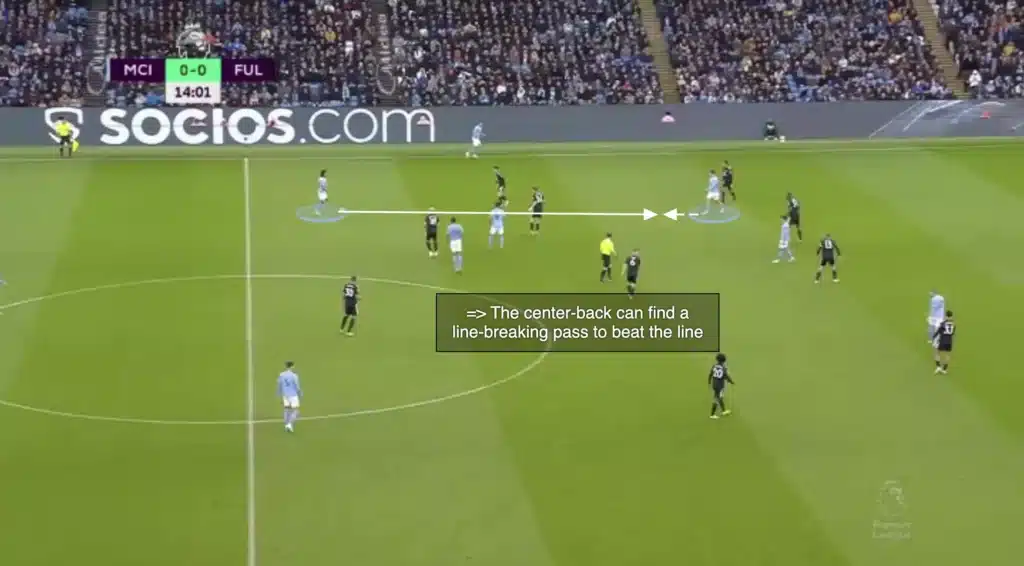
This approach is effective because it draws multiple opponents into a small zone before the ball is moved out at speed. The key is timing — if the combination is too slow, the press can collapse the space completely.
4. Wide-Side Traps and Switches
Another effective method is to overload one side of the pitch. By circulating the ball repeatedly on one flank, the team draws the entire opposition block toward that side. Once enough players are committed, a rapid switch of play (either through the pivot, a center-back, or directly with a long diagonal pass) finds a free man on the opposite flank, often with time and space to progress.
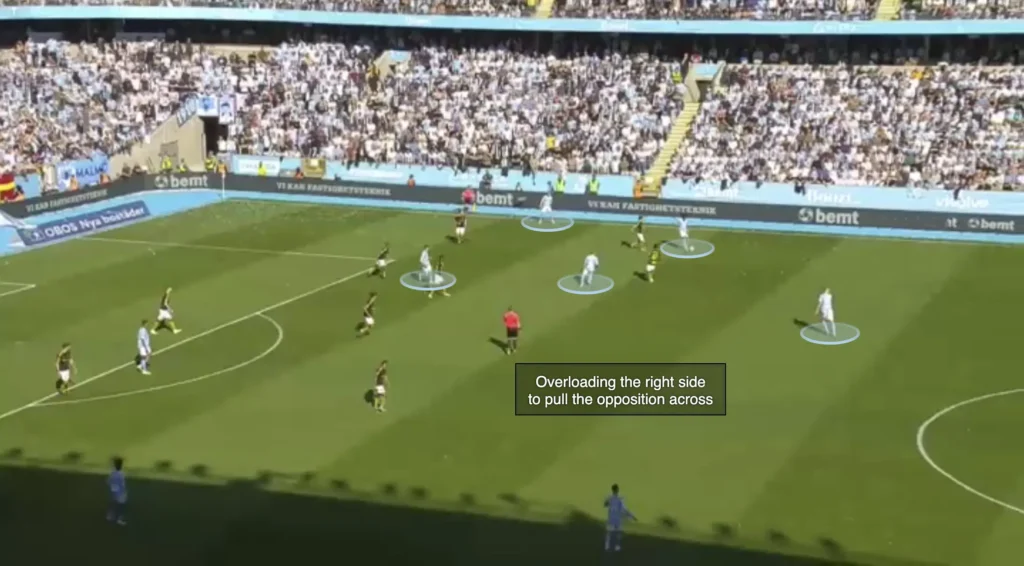
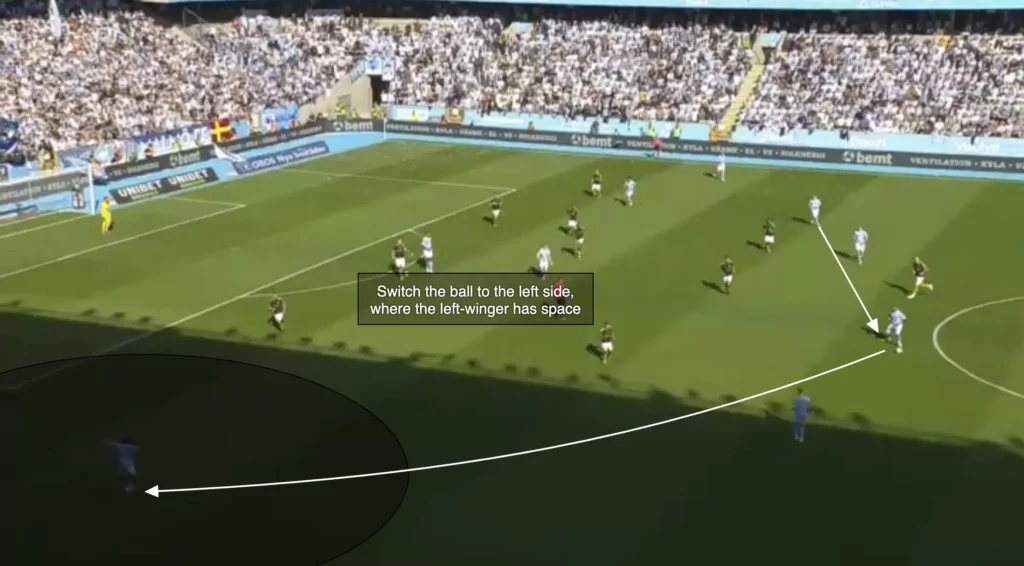
This approach is particularly effective against compact mid-blocks that shift aggressively toward the ball. The opponent’s horizontal movement becomes the very thing that opens the weak side.
5. Vertical Provocations in Midfield
Attracting pressure is not limited to the defensive third. Midfielders can receive on the half-turn and hold onto the ball just long enough to pull an opponent toward them. Once the presser commits, they release the ball into the vacated lane, often to an attacker who can then turn and attack the backline.
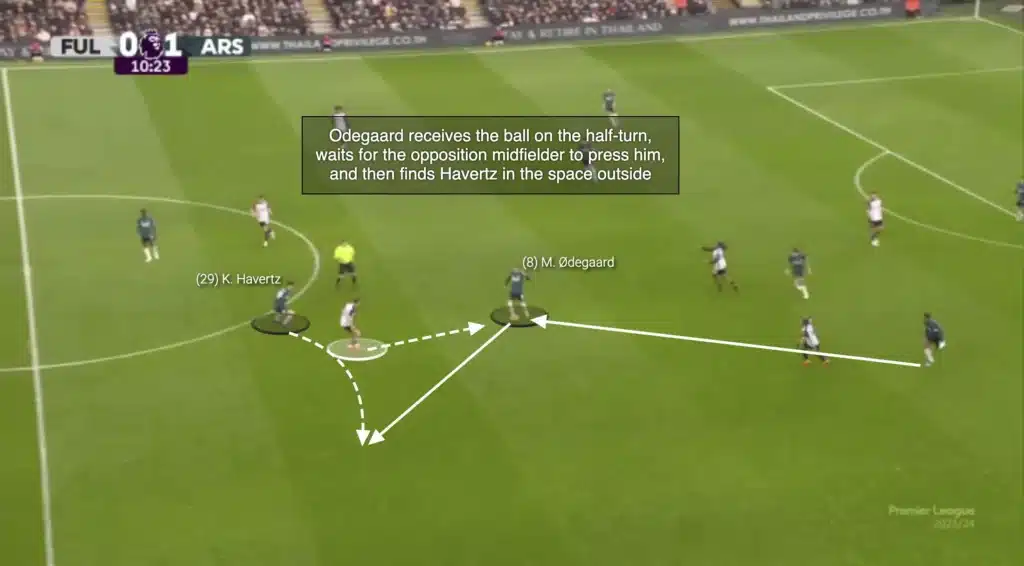
This can be especially dangerous because it provokes the opponent’s second line of pressure, leaving their midfield exposed and forcing defenders to step out or retreat in a disorganized way.
Coaching Considerations and Risks
Attracting pressure is not a tactic that can be applied blindly. It demands:
- Technically secure players capable of controlling the ball under pressure.
- Clear positional structures that ensure passing lanes remain open even when the block is compressed.
- Communication and awareness so that the trigger to accelerate play is recognized collectively.
The main risk is losing the ball in dangerous areas. A failed attempt to attract pressure can lead to conceding high-quality chances, as the team is typically stretched and in the middle of positional rotation. Coaches must therefore balance risk management with risk creation — knowing when to provoke and when to play more directly.
Conclusion: Turning Risk into Opportunity
Attracting pressure is one of the most powerful ways to progress the ball and destabilize an opponent. It transforms the opponent’s defensive strength — their pressing intensity — into a weakness, by luring them into areas where they can be bypassed and exploited.
Executed correctly, it creates some of the most dangerous attacking moments in football: attackers running at a disorganized, retreating defense. But it requires composure, coordination, and the courage to take risks under pressure.
For coaches, analysts, and scouts, the ability to recognize when and how a team attracts pressure is a key part of understanding their build-up identity — and a powerful tool for both developing and analyzing playing styles.
